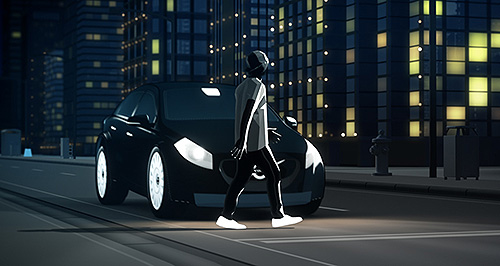Future models - Volvo - XC90Volvo’s see-in-the-dark carSight and sound: Volvo’s next-generation XC90 will include a raft of technology aimed at minimising the risk of crashes. Spotting road hazards a priority for next-generation Volvo XC908 Jul 2013 By BARRY PARK VOLVO has released more details of the technology that will underpin its next-generation XC90 soft-roader – with safety features that will put even Mercedes-Benz’s all-new S-Class in the shade. Due in Europe at the end of next year, the new XC90 will see in the dark, follow the car ahead, warn the driver of a broken-down car or roadworks in the lanes ahead, automatically brake if an animal wanders out on the road, alert you that an motorbike is near the car, help you catch the next green light and even tell you to slow down if the weather looks like it will get bad. Foremost, though, is the Swedish car-maker’s desire to cut down on the number of pedestrians killed on the world’s roads each year. The new XC90, the company says, will be able to see pedestrians in the dark that the driver could miss, expanding on technology that up until now can only detect them in daylight conditions. The system uses a more advanced forward-looking camera that can peer into the darkness, and provide the same automated braking as its current daylight-hours City Safety system if a pedestrian – or even a cyclist – unexpectedly appears in front of the car. The new XC90 will also recognise animals on the road ahead of the car, Volvo says, however, the car-maker’s release detailing the technology only alludes to Canada’s problems with moose, and not Australia’s issues with kangaroos. Volvo has hinted the XC90 will be one of the first cars to interact with other road users via car-to-car communications. It flagged this by saying slippery road conditions were the cause of six per cent of all crashes in the US, and this could be turned around if cars were able to warn oncoming traffic of the road conditions ahead. It also flagged that 10 per cent of fatalities in the US related to a car running a red light and hitting another vehicle, or pedestrians. “Enabling vehicles to communicate with each other, and with the traffic environment, opens up fantastic possibilities. Vital information can be shared and exchanged – creating a more comfortable and safer drive,” Volvo said. “Volvo Cars has signed a memorandum of understanding with the members of the Car 2 Car Communication Consortium regarding the implementation of standardised technology for communication between cars from 2016 onwards. “The aim is for inter-car communication to function between all cars, irrespective of make,” it said. The technology can expand to include traffic lights that tell cars an optimum speed to stay rolling, warnings about roadworks and crashes, foul weather that make driving conditions difficult, and even if an emergency vehicle is approaching. Meanwhile, technology that helps keep a driver in a defined lane on the freeway has expanded to include even unmarked roads, Volvo said. According to Volvo, a quarter of all crashes on its database of Swedish road trauma – the car-maker investigates every single crash with one of its cars on home turf – relate to a vehicle leaving the road before the crash takes place. It said the road-keeping technology would detect if the car was about to drive off the road and “autonomously applies steering torque to bring the vehicle back on track”. The XC90 will even include a version of Volvo’s self-parking system that can park the car with full autonomy and no driver input. The 11-year-old, high-riding XC90 is the oldest car in the Volvo range. When it was introduced in 2002, it featured an innovative anti-rollover function that endowed it with more stability in an emergency swerve. Volvo has said it wants to create the crashless car by 2020.  Read more21st of June 2013  Volvo’s self-parking prototypeVolvo builds self-steering concept car ahead of technology’s debut in the next XC9020th of February 2013  Volvo readying roo recognitionAussie wildlife to be detected by Volvo animal collision avoidance tech16th of July 2012  Volvo working on animal avoidance techAnimal avoidance, intersection assist and traffic jam ‘autopilot’ for future Volvos19th of June 2012  Volvo developing XC90 plug-inNext-gen Volvo XC90 to get alternative diesel-electric hybrid powertrainXC90 pricing
Motor industry news |
Click to shareVolvo modelsResearch Volvo XC90 pricing
Motor industry news |
























Facebook Twitter Instagram